Festival de la Cultura de los Eruditos Coreanos de Yeongju (영주 한국선비문화축제)
.0M 2025-04-23
Sobaek-ro 2796, Sunheung-myeon, Yeongju-si, Gyeongsangbuk-do.
054-630-8708 / 054-639-6612
El Festival de la Cultura de los Eruditos Coreanos de Yeongju es un evento local celebrado en la Aldea Seonbichon y el Centro Cultural Seonbi de Corea. Durante la festividad, se realizan distintas actividades de entretenimiento y eventos secundarios como desfile callejero, espectáculo de bibimbap (plato tradicional coreano con arroz y vegetales), corte de la cinta para la inauguración, elaboración de tótem o concurso de cocina, atrayendo de esta manera a muchos visitantes.
Festival del Puente de Troncos de Museom en Yeongju (영주무섬외나무다리축제)
8.0Km 2025-09-09
Sudo-ri 243-1, Munsu-myeon, Yeongju-si, Gyeongsangbuk-do.
054-630-8709
Los arroyos que la rodean dieron nombre a esta aldea: Sudori, o también Museom. Desde lejos se ve como una península, en la que se encuentran 9 tesoros culturales que constituyen una aldea con tradiciones antiguas del país. El Festival del Puente de Troncos es celebrado en cada otoño, y el camino del puente es seleccionado por el gobierno como uno de los 100 Mejores Caminos de Corea. Con la finalidad de levantar otra vez las tradiciones que se perdieron, este festival se celebra cada año con muchas actividades y eventos tradicionales.
Aldea Museom de Yeongju (영주 무섬마을)
8.2Km 2021-05-07
Museom-ro 234-beongil 31-12, Munsu-myeon, Yeongju-si, Gyeongsangbuk-do.
+82-54-638-1127
La Aldea Museom de la ciudad de Yeongju es una de las principales aldeas tradicionales de Corea que tienen tres lados rodeados por un río (Aldea Hahoe de Andong, Aldea Seonam de Yeongwol, Hoeryongpo de Yecheon, etc).
La unión de los arroyos Naeseongcheon y Yeongjucheon fluye velozmente por las faldas de los montes Taebaeksan y Sobaeksan; y abraza la aldea haciéndola parecer como una isla sobre tierra. El blanco arenal extendido por todo el río y los frondosos bosques crean fantásticas vistas naturales, y se estima que fue a mediados del siglo XVII cuando la gente empezó a poblar el sitio. La familia Park de Bannam y la familia Kim de Yean son las más predominantes, y en la actualidad se encuentran 48 familias que viven manteniendo las tradiciones.
Nueve casas hanok de esta aldea están registradas como Patrimonio Cultural de Gyeongsangbuk-do. Entre las que más destacadas están Haeudang y Manjukjae. Haeudang, Patrimonio Folclórico de Gyeongsangbuk-do Nº 92, se localiza a la izquierda tras cruzar el puente Sudogyo. La vivienda lleva el nombre poético de su primer dueño Kim Nak-pung. Otro tesoro para visitar sin falta es Manjukjae, una de las casas hanok más viejas de la zona. En el centro está Manungotaek, una edificación del siglo XIX y Tesoro Folclórico Nº 118. Esta es la casa de la familia de la mujer del poeta de renombre Jo Ji-hun, quien a través del poema Byeolli exaltó la belleza natural de la Aldea Museom.
La atracción que complementa el turismo en la Aldea Museom es el puente de árbol que sirvió de conexión entre la aldea y la otra orilla del río durante 350 años. El puente mide aproximadamente 150 metros, aunque su ancho mide apenas 30 cm. Ahora, con la construcción del Puente Sudogyo que es más moderno y seguro, el puente de árbol ha perdido su función, pero cada año los habitantes de la zona organizan diferentes celebraciones para revivir el pasado.
Festival del Ginseng de Punggi en Yeongju (경북영주 풍기인삼축제)
10.6Km 2025-09-09
Seongnae-ri 240-1, Punggi-eup, Yeongju-si, Gyeongsangbuk-do
054-635-0020
Punggi es otra de las grandes áreas productoras de ginseng (insam, en coreano) del país, que presentan productos de muy buena calidad. Entre la gran variedad de eventos y programas anexos están: masajes de ginseng, sauna de ginseng, campeonato de cortar ginseng, etc. El gran efecto del ginseng de Punggi es que por su buena calidad de tierra, el producto posee una estructura interna fuerte y buen aroma, lo cual también ayuda al metabolismo.
Mercado de Ginseng de Punggi (풍기인삼시장)
10.8Km 2024-01-25
Insam-ro 8, Punggi-eup, Yeongju-si, Gyeongsangbuk-do.
El Mercado de Ginseng de Punggi es el mercado de su tipo más antiguo del país, famoso por la calidad de su ginseng (insam, en coreano). Con cierta frecuencia se abre un mercado tradicional itinerante que suma más oferta de productos.
Estación de Punggi (풍기역)
10.8Km 2021-04-12
Insam-ro 1, Punggi-eup, Yeongju-si, Gyeongsangbuk-do.
La Estación de Punggi pertenece a la línea Jungang de trenes y se ubica en Punggi-eup, ciudad de Yeongju, provincia de Gyeongsangbuk-do. Está a una distancia de 199,7 km de la Estación de Cheongnyangni en Seúl, y sirve como estación de mantenimiento para otras estaciones en el área de Yeongju, incluyendo las de Huibangsa y Anjeong. En los alrededores se pueden ver obras relacionadas con el famoso ginseng de la región. Hay esculturas y pinturas. Algunas atracciones cercanas son el Mercado de Ginseng de Punggi, el monte Sobaeksan y el templo Buseoksa.
Sogang House (소강고택)
13.5Km 2025-07-18
22 , Baraemi-gil, Bonghwa-gun, Gyeongsangbuk-do
Sogang House is a 100-year-old hanok located in Baraemi Village, Bonghwa, Gyeongsangbuk-do, and was built by Namho Kim Roe-sik, an independence activist, for his second son, Sogang Kim Chang-gi. There are six rooms, ranging from Sarangbang to Eosabang. Sarangbang contains two rooms and a daecheong maru (wooden-floored hall), Seonbibang is the first room to see the sun in the morning, and Doryeongbang is the only ondol (underfloor heated) room built with red clay. All rooms have air conditioning, and as you exit the room, you are greeted by a beautiful garden with flowering trees.
Academia Neoconfuciana Sosu Seowon (소수서원) [Patrimonio Cultural de la Humanidad de la Unesco]
13.7Km 2024-07-18
Sobaek-ro 2740, Sunheung-myeon, Yeongju-si, Gyeongsangbuk-do
Seowon significa "enseñar el confucianismo", y la academia Sosu Seowon es fue la primera institución fundada en Corea, en el antiguo solar del templo Suksusa construido durante la dinastía Silla. A pesar de haber perdido el antiguo templo Suksusa su forma original, en la academia todavía subsisten partes de aquel templo como el Dangganjiju (Tesoro Nacional) en la entrada y los recintos Choseok, Buldaejoasok conservados en distintos lugares de la academia.
La región de Sunheung es el lugar donde nació y creció el sabio confucionista Yuhyeon Anhyang (1243-1306) a fines de la dinastía Goryeo. En el año 37 (1542) del reinado del emperador Jungjong de la dinastía Joseon (rey de 1506 a 1544) el Magistrado de Diputados de Punggi Jusaebung (1495-1554) construyó Baekundong Seowon y la tumba de Anhyang de Joseon en honor a este.
En el año 1550, la academia Baekundong Seowon, que había sido fundada para establecer el progreso de la filosofía confucionista, cambió su nombre por Sosu Seowon. Y en ese mismo año, Toegye Yi Hwang (1501-1570) lo reconoció oficialmente como la primera academia privada de Corea. Es una de las pocas academias que sobrevivió a la política de demolición ordenada por el regente Hungseon Daewongun (1820-1898) en el año 1871 (reinado del emperador Gojong 1863-1907), conservando hasta el día de hoy su forma original. Desde el monte Sobaeksan, ubicado sobre el lado derecho de la entrada a la academia corre un arroyo de agua transparente llamado Okgyesu, el cual termina en el río Nakdonggang.
Dentro de la academia existe un auditorio en el cual hay un cartel colgado que dice “Sosu Seowon”, escrito por Myeongjong. Detrás del auditorio se encuentran los recintos Jikbangjae, Ilshinjae, Hakgujae y Jirakjae. En la parte oriental está la biblioteca (seogo), el retrato de Anhyang (Tesoro Nacional) dibujado a fines de la dinastía Goryo, y la tumba Munseong donde está sepultado el Jeonjwado del emperador Daeseongjiseong Munseong (Tesoro Nacional).
Museo Sosu (소수박물관)
13.7Km 2021-03-05
Sobaek-ro 2780, Sunheung-myeon, Yeongju-si, Gyeongsangbuk-do
+82-54-639-7691
El Museo Sosu pretende consolidar y organizar el legado confucionista de la nación y establecer la raíz de su espíritu a través de Sosu Seowon, la primera academia neoconfuciana creada en Corea. Es el único museo donde se puede experimentar el legado de esta cultura y su historia durante la dinastía Joseon. El museo abrió el 22 de septiembre de 2004 y desde entonces ha sido un lugar para aprender con las reliquias del confucianismo.
Aldea de Eruditos Seonbichon (선비촌)
14.0Km 2022-09-20
Sobaek-ro 2796, Sunheung-myeon, Yeongju-si, Gyeongsangbuk-do
Siendo un lugar que congrega el espíritu histórico de los eruditos confucianos de la antigüedad, ubicado en Yeongju, de la provincia de Gyeongsangbuk-do, es un espacio académico en donde podrá experimentar la cultura tradicional de la región y del país. Los turistas extranjeros tienen una amplia variedad de programas atractivos para participar, entre ellos, elaborar el tteok (pasta de arroz), recorrer con el farol tradicional de color rojo y azul cheongsachorong, representación de la boda tradicional, experimentar los juegos foclóricos yunnnori (lanzar palos al aire), jegichagi (dar puntapiés a una borla), visitar un museo, etc. Además, en los puestos callejeros, tendrá la posibilidad de degustar los platos tradicionales. Es más, la diversión no termina aquí, en las casas tradicionales, también podrá alojarse y experimentar la cultura del país, mediante las actividades académicas y espectáculos relacionados a los protocolos y tradiciones que hoy en día se encuentran olvidadas. En sus cercanías están la Academia Neoconfuciana Sosu Seowon, el Museo Sosu y el templo Buseoksa, entre otros destinos turísticos.
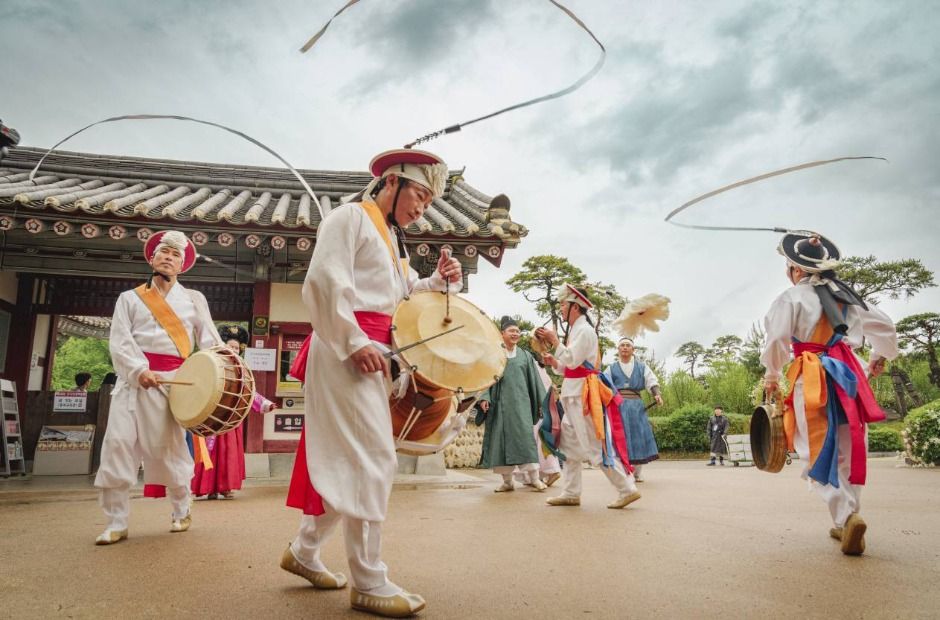
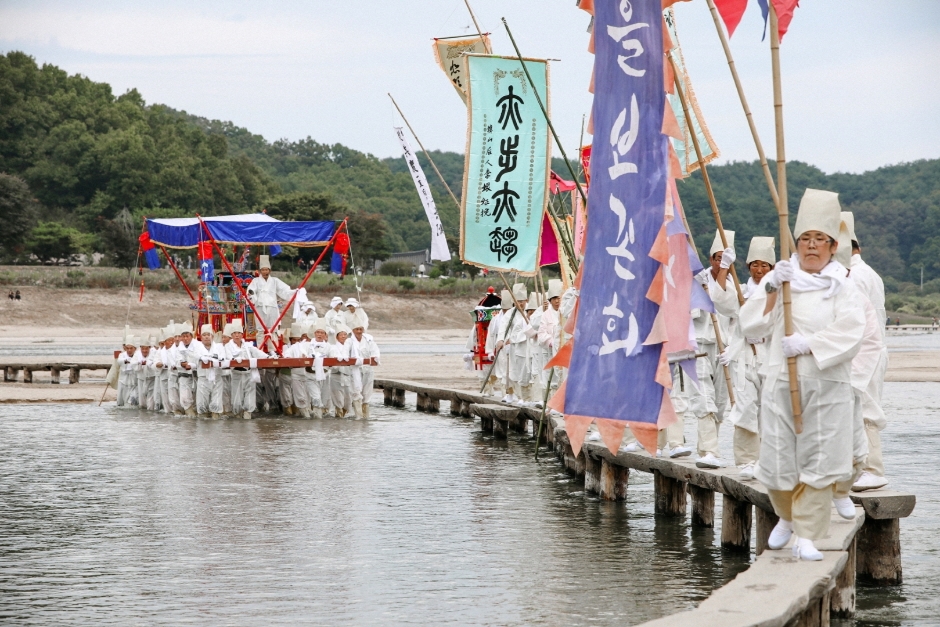
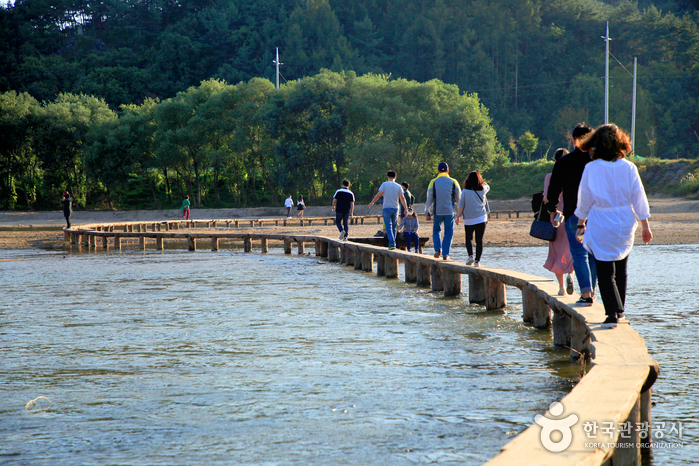
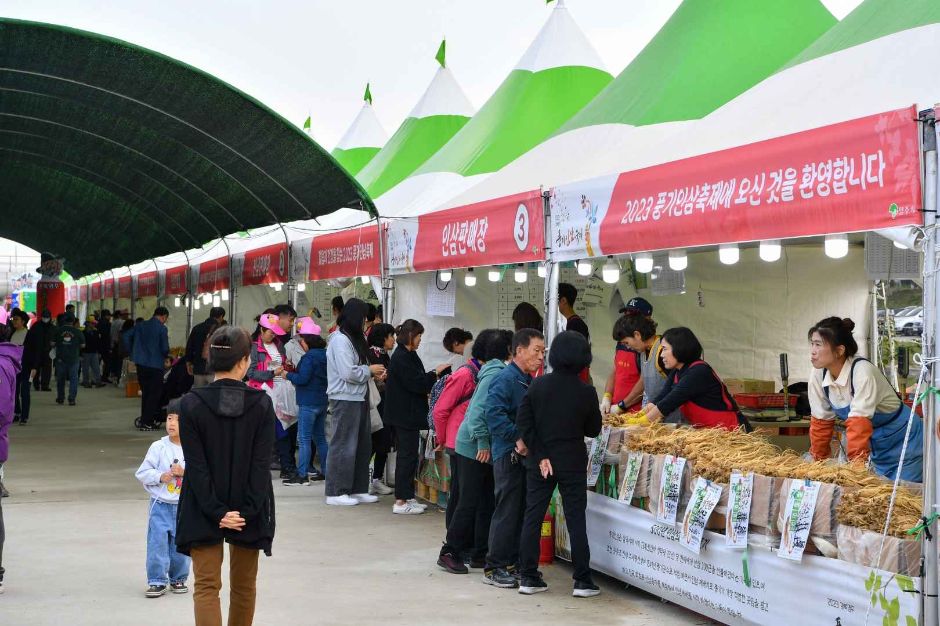
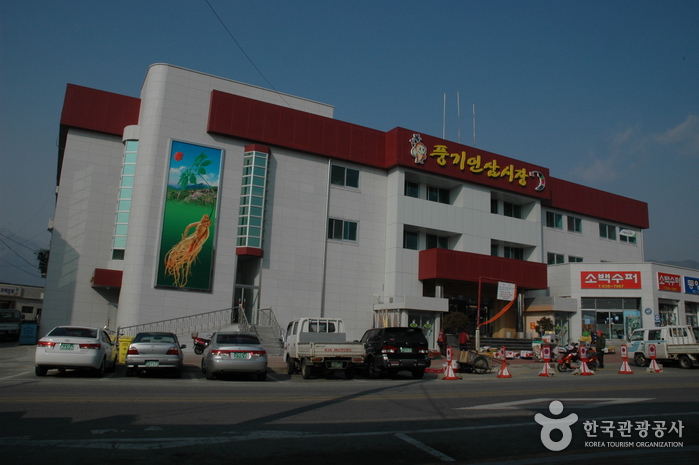

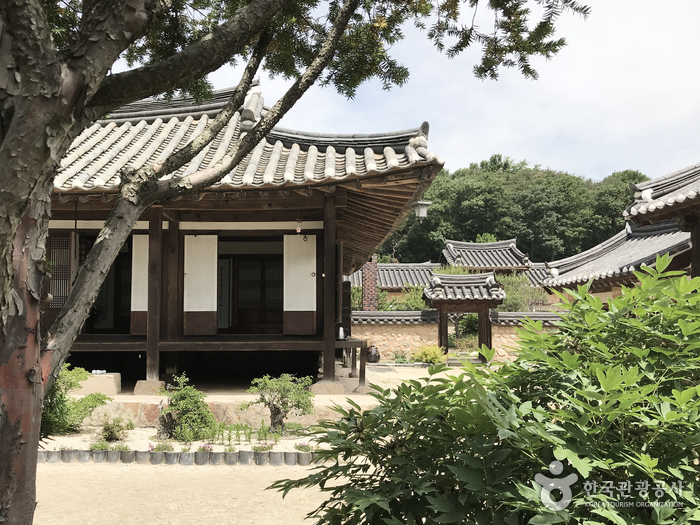
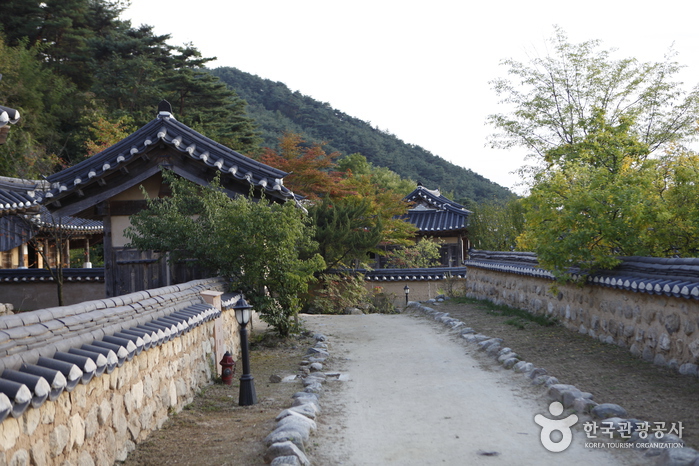
 Español
Español
 한국어
한국어 English
English 日本語
日本語 中文(简体)
中文(简体) Deutsch
Deutsch Français
Français Русский
Русский